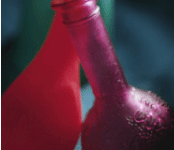
MIT develops ‘tractor beam’ for cells
美国麻省理工学院研制出细胞的“牵引波束”
来源:麻省理工学院
翻译:Duli@语际翻译
In a feat that seems like something out of a microscopic version of Star Trek, MIT researchers have found a way to use a “tractor beam” of light to pick up, hold, and move around individual cells and other objects on the surface of a microchip.
这简直像是微观版的星际旅行表演。麻省理工学院的研究人员已经发现了一种方法,用“牵引光束”在微晶片表面上挑取,操纵,并移动单个细胞以及其他物质。
The new technology could become an important tool for both biological research and materials research; say Matthew J. Lang and David C. Appleyard, whose work is being published in an upcoming issue of the journal Lab on a Chip. Lang is an assistant professor in the Department of Biological Engineering and the Department of Mechanical Engineering. Appleyard is a graduate student in Biological Engineering.
Matthew J. Lang和David C. Appleyard表明,这项新技术有可能成为生物学研究和材料学研究的重要工具,他们的工作即将刊登在新一期的《芯片实验室》(Lab on a Chip)杂志上。Lang是在生物工程系和机械工程系的助理教授。Appleyard是生物工程系的一名研究生。
The idea of using light beams as tweezers to manipulate cells and tiny objects has been around for at least 30 years. But the MIT researchers have found a way to combine this powerful tool for moving, controlling and measuring objects with the highly versatile world of microchip design and manufacturing.
利用光束作为镊子操控细胞和微小物体的概念已经至少被提出30年了。但麻省理工学院的研究人员发现了一种方法,可以将这一用于移动,控制和测量物体的强大工具应用到高度挑战性的微芯片设计和制造之中。
Optical tweezers, as the technology is known, represent “one of the world's smallest microtools,” says Lang. “Now, we're applying it to building [things] on a chip.” Says Appleyard, “We've shown that you could merge everything people are doing with optical trapping with all the exciting things you can do on a silicon wafer…There could be lots of uses at the biology-and-electronics interface.”
Lang指出,光镊,正如其名,代表“世界上最小的微型工具之一”。Appleyard说,“现在我们正运用它在芯片上建造[某些物质]。我们已经表明,可以用光阱技术将人们正在做的所有的实验都融合在一张硅片中。基于这一生物学-电子学界面可以开发出很多用途。”
For example, he said, many people are studying how neurons communicate by depositing them on microchips where electrical circuits etched into the chips monitor their electrical behavior. “They randomly put cells down on a surface, and hope one lands on [or near] a [sensor] so its activity can be measured. With [our technology], you can put the cell right down next to the sensors.” Not only can motions be precisely controlled with the device, but it can also provide very precise measurements of a cell's position.
他举例说,很多人都是通过将神经元堆积在微芯片上研究他们如何交流的过程,芯片上刻有电路以监测其电学行为。“他们把任意细胞放到一个表面上,并希望其中一个细胞落在传感器上[或附近],以检测它的运动。基于[我们的技术],你可以将细胞准确地放置到传感器边上。”该设备不仅能实现严格控制细胞运动,还能精确测量细胞的位置。
Optical tweezers use the tiny force of a beam of light from a laser to push around and control tiny objects, from cells to plastic beads. They usually work on a glass surface mounted inside a microscope so that the effects can be observed.
光镊用这一来自激光光束的微力来推动和控制微小物体(从细胞到塑胶珠)。他们通常在玻璃表面工作,而该玻璃被装进一个显微镜,以观察效果。
But silicon chips are opaque to light, so applying this technique to them not an obvious move, the researchers say, since the optical tweezers use light beams that have to travel through the material to reach the working surface. The key to making it work in a chip is that silicon is transparent to infrared wavelengths of light - which can be easily produced by lasers, and used instead of the visible light beams.
研究人员表明,硅芯片是不透光的,所以这一技术对它们并没有明显作用,光学镊子所使用的光束必须穿过物质才能达到工作表面。要让光镊对芯片发挥作用的关键点在于必须用红外光代替可见光束,硅可以透过红外光。这一红外光可以很容易的由激光来制取。
To develop the system, Lang and Appleyard weren't sure what thickness and surface texture of wafers, the thin silicon slices used to manufacture microchips, would work best, and the devices are expensive and usually available only in quantity. “Being at MIT, where there is such a strength in microfabrication, I was able to get wafers that had been thrown out,” Appleyard says. “I posted signs saying, ‘I'm looking for your broken wafers’.”
在开发该系统的过程中,Lang和Appleyard起初并不知道要使用多少厚度和哪种表面纹理的晶圆薄硅片切片用于制造微芯片才能达到最好的工作状态,得经过大量试验。这一设备昂贵,通常又只能批量采购。Appleyard说,“值得庆幸的是,我所在的麻省理工学院在微细加工方面有很强的实力,所以很容易获得废弃的晶片。我经常发贴子告诉大家,‘我正需要您的废弃晶片,别忘了告诉我’”。
After testing different samples to determine which worked best, they were able to order a set that were just right for the work. They then tested the system with a variety of cells and tiny beads, including some that were large by the standards of optical tweezer work. They were able to manipulate a square with a hollow center that was 20 micrometers, or millionths of a meter, across - allowing them to demonstrate that even larger objects could be moved and rotated. Other test objects had dimensions of only a few nanometers, or billionths of a meter. Virtually all living cells come in sizes that fall within that nanometer-to-micrometers range and are thus subject to being manipulated by the system.
经过不同样品的测试寻找性能最佳的芯片,然后组成特定的组合。研究人员用多种细胞和小珠测试这个系统,其中包括一些在光镊标准下较大的样品,并能够控制一个带20微米,或者百万分之一米的空心正方形。试验证明,即使较大的物体也可进行移动和旋转。其他被试物体的尺寸只有几个纳米,或十亿分之一米。几乎所有活体细胞的大小都在几纳米至几微米范围内,并且可由该系统操控。
As a demonstration of the system's versatility, Appleyard says, they set it up to collect and hold 16 tiny living E. coli cells at once on a microchip, forming them into the letters MIT.
为了表现该系统的通用性,Appleyard说,他们设置好,一次性将16个活的大肠杆菌细胞聚集固定在一个微芯片上,并使他们排成“MIT”的字样。
附:
光镊的定义:
来源:维客
光是一种特殊的物质,携带有能量和动量,光与物质相互作用时彼此交换能量和动量,产生各种效应。
光与物质间可以交换动量,使受光照射的物体受到一个力或力矩,也即产生光的力学效应。由于通常光源发出的光产生的力学效应太微弱,这一效应在激光发明之后才引起人们的关注,并取得了突破性进展。
1.光镊的原理
1.1光的动量和光压
光的电磁理论,证明了光作为电磁波,不但具有能量,而且具有动量。
对于单色平面光波,设其电磁场能量密度为u,它以光速c传播,相应的电磁能流密度矢量的大小为
S=uc,(方向指向光的传播方向)
而动量密度(单位体积的光场携带的动量)为
g=u/c,(方向沿光的传播方向或波矢的方向)
单位时间流过垂直光传播方向单位面积的动量为G=gc=u=S/c。按光的量子理论,波矢为k的单色平面波可以看成是一束光子流,其中每一个光子所携带的能量ε=ν,动量为:
P=h*k=h/λ
(其中,h:普朗克常数,λ=1/k光波长)
如果光束中的光子密度为n,也即光场的能量密度为u=ε,于是动量密度
g=nP=u/c,
与经典电磁理论的结果一样。由此式直接可得能量为E的平面光波所携带的动量为
G=E/c
既然光具有动量,根据牛顿第二定律,作用在物体上的力就等于光引起的单位时间内物体动量的变化光与物体相互作用的过程中就可能伴随有动量的交换。单位时间里物体动量的变化就是所受的力,这意味着光对被照物体施加一个力的作用。这种由于光辐射对物体产生的力通常称之为光的辐射压力或简称光压。
一束平行光照射到物体上,其动量变化为ΔP,历经时间t秒,则物体得到的动量为-ΔP。由此可得光作用在物体上的力为F=-ΔP/t。如果光束作用的面积为S,则单位面积上受到的力即为光压p=F/S。
2.2 光镊——单光束梯度力光阱
日常,我们用来挟持物体的镊子,都是有形物体 ,我们感觉到镊子的存在,然后通过镊子施加一定的力钳住物体。捕获微小粒子的光镊是一个特别的光场,这个光场与物体相互作用时,物体整个受到光的作用从而达到被钳的效果,然后可以通过移动光束来实现迁移物体的目的。如果以形成光场的中心划定一个几微米方园的区域,你将会观察到一旦光子涉足这个禁区就会自动迅速坠落光的中心,表现出这个光场具有地心引力的效应。如将被光镊捕获的粒子比做坠入碗底的玻璃珠,那末,光镊又酷似一个陷阱。这个特别的光场造就了一个势能较低的区域(碗底),即从这区域内到区域外存在一个势垒(碗壁)。当物体的动能不足以克服势垒时,粒子将始终停留在阱内。虽然光与物体相互作用的过程我们是看不见的摸不着,其结果展现给我们的是,通过光镊作用的物体是在按特定路线运行。光镊搬运粒子的情形就酷是一个无形的机械手,这个看不见的机械手将按照您的意志形自如地控制目标粒子。
对于一台光强呈高斯型分布,功率为10mW的He-Ne激光,若光束发散角为2’,由此获得光束方向上的辐射亮度是太阳光的1万倍,若把该光束会聚到微米量级,由上述方法可计算出,在光束中心可产生106达因/平方米的辐射压力,如果把一个微米量级的电介小球置于此He-Ne激光光束焦点处,可使该小球产生108cm/s2≈105g的加速度,如此大的力使得激光动力学的开发应用成为可能。 |